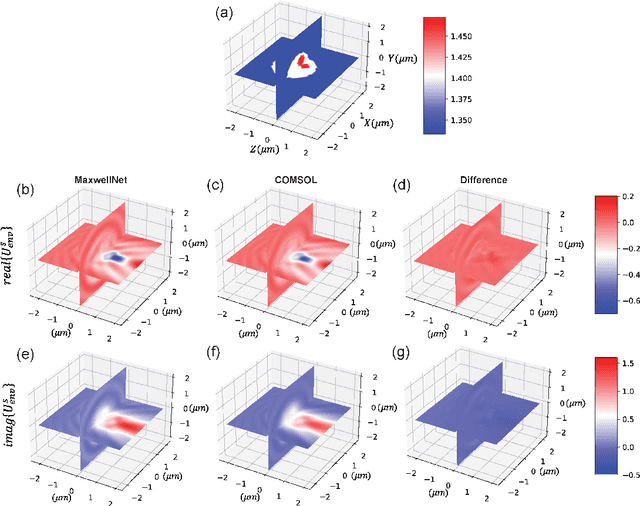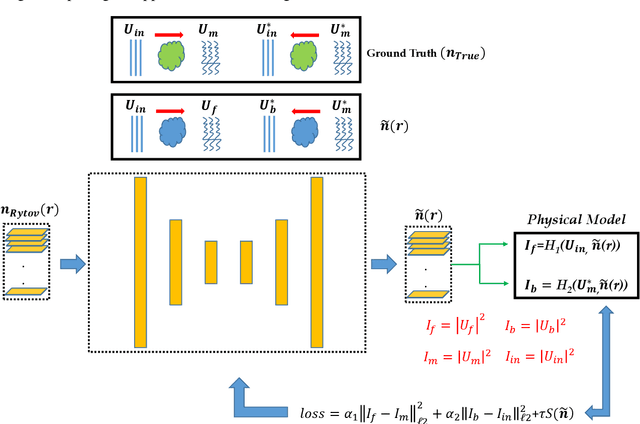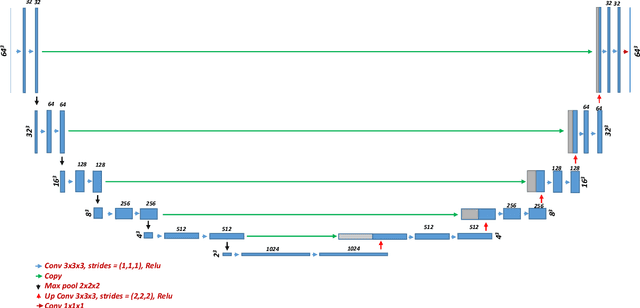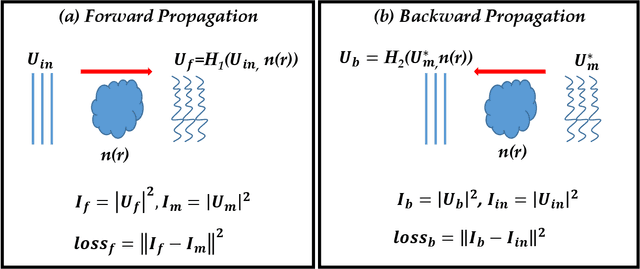Amirhossein Saba
Physics-informed neural networks for diffraction tomography
Jul 28, 2022



Abstract:We propose a physics-informed neural network as the forward model for tomographic reconstructions of biological samples. We demonstrate that by training this network with the Helmholtz equation as a physical loss, we can predict the scattered field accurately. It will be shown that a pretrained network can be fine-tuned for different samples and used for solving the scattering problem much faster than other numerical solutions. We evaluate our methodology with numerical and experimental results. Our physics-informed neural networks can be generalized for any forward and inverse scattering problem.
Optical Diffraction Tomography based on 3D Physics-Inspired Neural Network (PINN)
Jun 10, 2022



Abstract:Optical diffraction tomography (ODT) is an emerging 3D imaging technique that is used for the 3D reconstruction of the refractive index (RI) for semi-transparent samples. Various inverse models have been proposed to reconstruct the 3D RI based on the holographic detection of different samples such as the Born and the Rytov approximations. However, such approximations usually suffer from the so-called missing-cone problem that results in an elongation of the final reconstruction along the optical axis. Different iterative schemes have been proposed to solve the missing cone problem relying on physical forward models and an error function that aims at filling in the k-space and thus eliminating the missing-cone problem and reaching better reconstruction accuracy. In this paper, we propose a different approach where a 3D neural network (NN) is employed. The NN is trained with a cost function derived from a physical model based on the physics of optical wave propagation. The 3D NN starts with an initial guess for the 3D RI reconstruction (i.e. Born, or Rytov) and aims at reconstructing better 3D reconstruction based on an error function. With this technique, the NN can be trained without any examples of the relation between the ill-posed reconstruction (Born or Rytov) and the ground truth (true shape).
 Add to Chrome
Add to Chrome Add to Firefox
Add to Firefox Add to Edge
Add to Edge